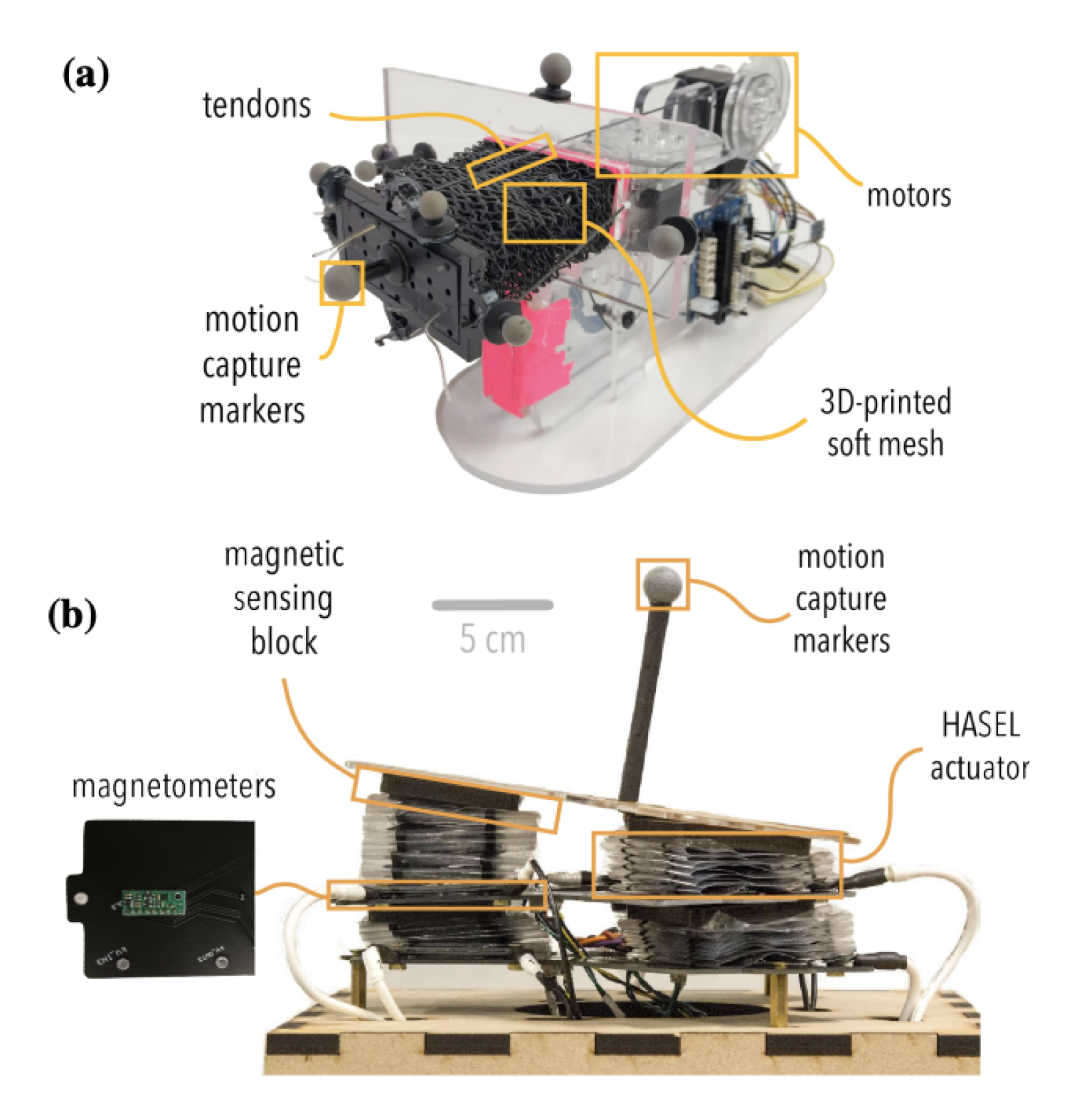Toward smart composites: small-scale, untethered prediction and control for soft sensor/actuator systems

We present a suite of algorithms and tools for model-predictive control of sensor/actuator systems with embedded microcontroller units (MCU). These MCUs can be colocated with sensors and actuators, thereby enabling a new class of smart composites capable of autonomous behavior that does not require an external computer. In this approach, kinematics are learned using a neural network model from offline data and compiled into MCU code using nn4mc, an open-source tool. Online Newton-Raphson optimization solves for the control input. Shallow neural network models applied to 1D sensor signals allow for reduced model sizes and increased control loop frequencies. We validate this approach on a simulated mass-spring-damper system and two experimental setups with different sensing, actuation, and computational hardware: a tendon-based platform with embedded optical lace sensors and a HASEL-based platform with magnetic sensors. Experimental results indicate effective high-bandwidth tracking of reference paths (120 Hz and higher) with a small memory footprint (less than or equal to 6.4% of available flash). The measured path-following error does not exceed 2 mm in the tendon-based platform, and the predicted path following error does not exceed 1 mm in the HASEL-based platform. This controller code's mean power consumption in an ARM Cortex-M4 computer is 45.4 mW. This control approach is also compatible with Tensorflow Lite models and equivalent compilers. Embedded intelligence in composite materials enables a new class of composites that infuse intelligence into structures and systems, making them capable of responding to environmental stimuli using their proprioception.
Reference
Manzano, Sarah Aguasvivas, Vani Sundaram, Artemis Xu, Khoi Ly, Mark Rentschler, Robert Shepherd, and Nikolaus Correll. "Toward smart composites: small-scale, untethered prediction and control for soft sensor/actuator systems." Submitted to Journal of Composite Materials (2022). [PDF]

